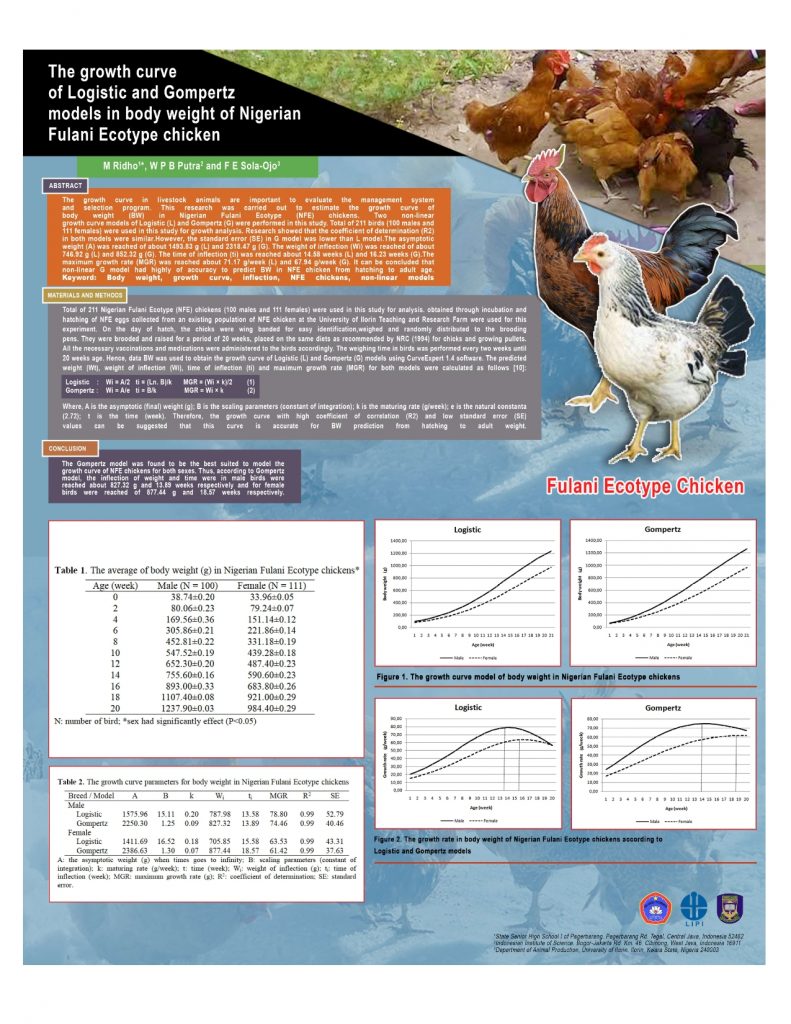Paper ID: 12
THE GROWTH CURVE OF GOMPERTZ AND LOGISTIC MODELS IN BODY WEIGHT OF ECOTYPE FULANI CHICKENS (GALLUS DOMESTICUS)
Authorship
Muhammad Ridho1*, Widya Pintaka Bayu Putra2, Sola-Ojo, F.E3
1 Department of Archeology, Faculty of Sciences and Arts, Bursa Uludağ University of Turkey, Bursa Uludağ University Görukle Campus Cad. No: 130A, Nilüfer, Bursa, Turkey 16059
2 Research Center of Biotechnology, Indonesian Institute of Science Bogor-jakarta Rd. Km. 46, Cibinong, Bogor, West Java, Indonesia 16911
3 Department of Animal Production, University of Ilorin, Ilorin, Nigeria 240272
muhammad7neo@gmail.com
Abstract
The growth curve in livestock animals are important to evaluate the management system and selection program. This research was carried out to estimate the growth curve of body weight in Ecotype Fulani (EF) chickens. Two growth curves of Logistic (L) and Gompertz (G) models were performed in this study. Total of 211 birds were used in this study for growth curve analysis. Research showed that the coefficient of determination (R²) in both curves were similar (0.99). Hence, the standard error (SE) in G model was lower than L model in each sex group. The adult weight (A) in birds were 1575.96 g (male) or 1411.69 g (female) in L model and 2386.63 g (male) or 2250.30 g (female) in G model. The inflection weight (Wi) in bird was 787.98 g (male) or 705.85 g (female) in L model and 877.44 g (male) or 827.32 g (female) in G model. The inflection time (ti) in birds were 13.58 week (male) or 15.58 week (female) L model and 18.57 week (male) or 13.89 week (female) in G model. Thus, the maximum growth rate (MGR) in birds were 78.80 g/wk (male) or 63.53 g/wk (female) in L model and 61.42 g/wk (male) or 74.46 g/wk (female) in G mode. It was concluded that the growth curve of G model was accurate to predict the body weight of EF chickens from hatching to adult age.
